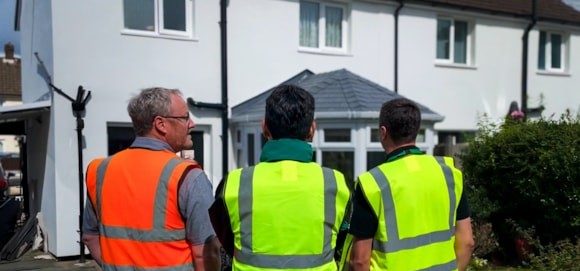An eight-week consultation and engagement process is now open that will gather local feedback around the principles for investment and development of the city centre fringe areas over the next decade and more. Manchester City Council (MCC) and Salford City Council (SCC) are working in collaboration on the ambitious proposals that could see 7,000 new homes built across seven distinct neighbourhood areas, which could support 4,500 jobs. The Draft Strategic Regeneration Framework (SRF) for Strangeways and Cambridge has already been heard by both Council’s respective Executive and Cabinet committees, and local people, businesses and other stakeholders are now invited to share their thoughts on the plans. Consultation People can provide feedback online (strangewaysandcambridgesrf.info) and in-person events will also be held for respondents to ask questions and find out more about the long-term regeneration proposals, which will also include refreshments and activities for families. Salford – Broughton Community Centre, Great Clowes Street, Salford, M7 1ZQ Salford – Broughton Community Centre, Great Clowes Street, Salford, M7 1ZQ Manchester – The Yard, 11 Bent Street, Manchester, M8 8NF Salford – Broughton Community Centre, Great Clowes Street, Salford, M7 1ZQ Salford – Broughton Community Centre, Great Clowes Street, Salford, M7 1ZQ Manchester – The Yard, 11 Bent Street, Manchester, M8 8NF Manchester – The Yard, 11 Bent Street, Manchester, M8 8NF The consultation will close on Monday 26 May 2025 after which the results will be reported back to MCC Executive and SCC’s cabinet committees. Leader of the Council Bev Craig said: “This framework is our shared long-term vision, alongside our colleagues in Salford, to deliver a transformation in the Strangeways and Cambridge communities. “We have an opportunity to create a platform for development and investment, enabled by the successful work carried out by the Operation Vulcan partnership, to support businesses to grow and prosper in these neighbourhoods – creating thousands of new jobs and support the ongoing growth of our city – alongside a major new public park and new homes, including Council, social and genuinely affordable housing. “We know this area has challenges, including the prison that presents a key barrier to the regeneration of the area, but we also know that there is energy and a community brimming with potential. “We will deliver huge change in Strangeways in the coming years, working alongside the people who live and work there, and as we move to consultation in the coming weeks, we want to speak to local people and businesses about how we can make this part of the city thrive.” Salford City Mayor, Paul Dennett added: “We’ve been on a journey of growth and regeneration in recent years, and our work has changed the landscape in different parts of Salford for the benefit of our residents. It’s now time to focus on the Cambridge area and working with colleagues in Manchester, this framework provides us with a once in a lifetime opportunity to do that. “This framework proposes options for the Salford part of the SRF, taking into account the requirements of residents and local businesses, and the need for quality housing in the area. The key will be to balance these needs with what the long-term flood data is telling us and how we future-proof the area against climate change. “The proposals in the framework seek to identify the best possible options for this area. These include the exciting opportunity to create a new city park for all, with an option for appropriate levels of mixed-use development, to continue to drive sustainable growth. “I’d urge everyone with a vested interest in this area, whether you’re a resident or business to engage with the consultation process and work with us help shape the future of this part of the city.” Building, Design & Construction Magazine | The Choice of Industry Professionals














